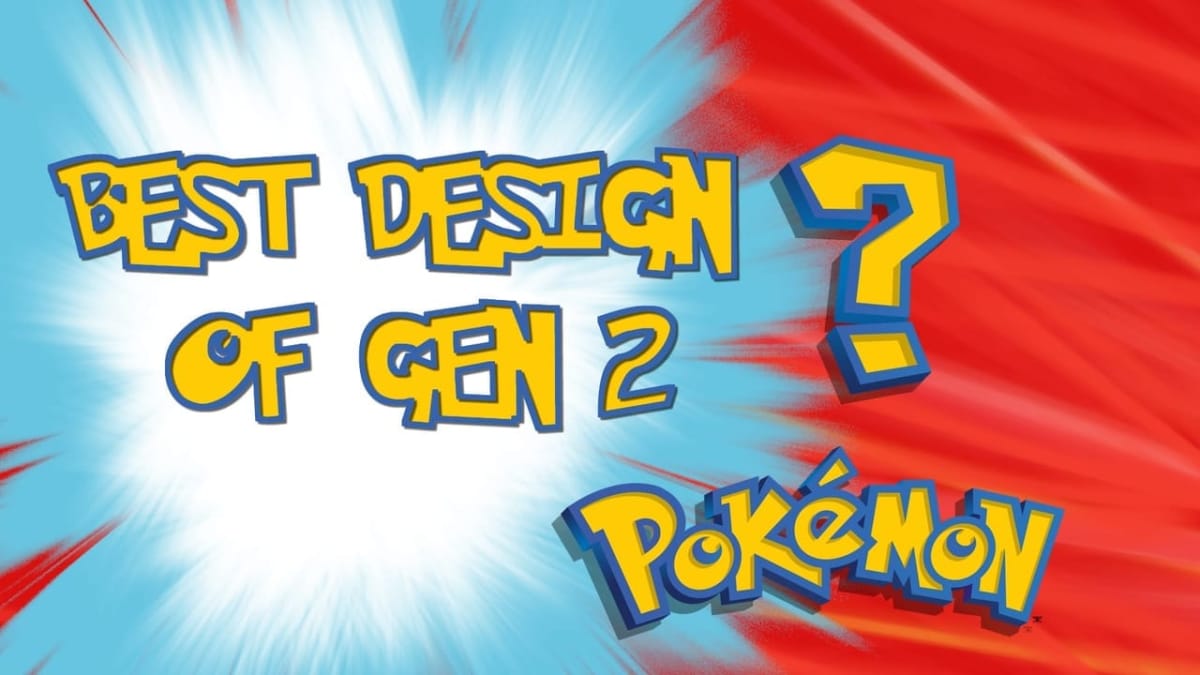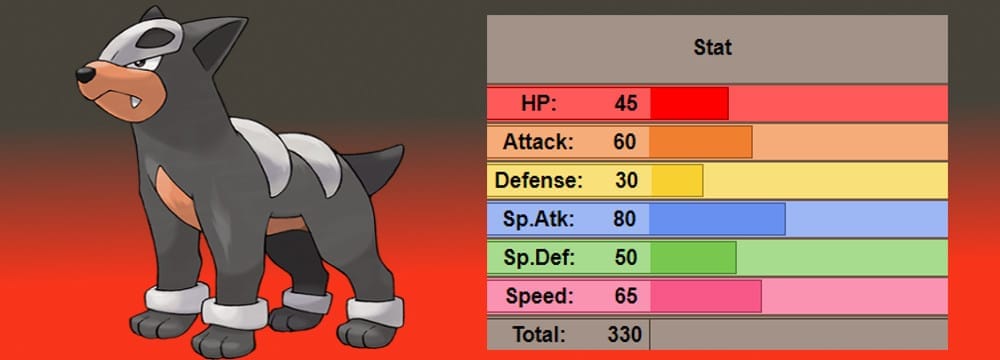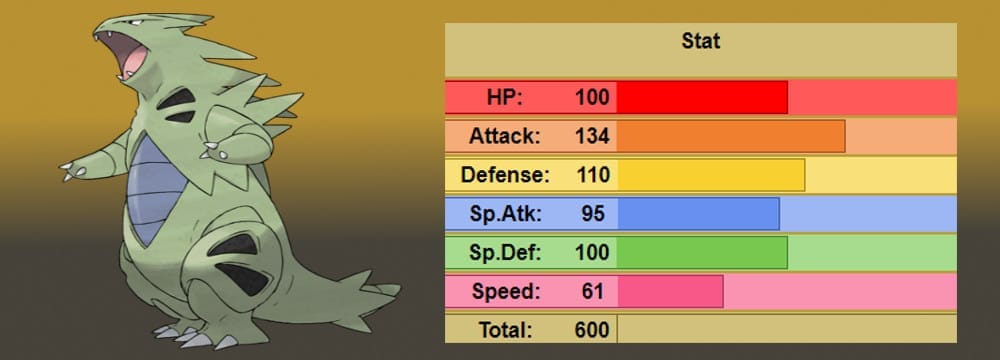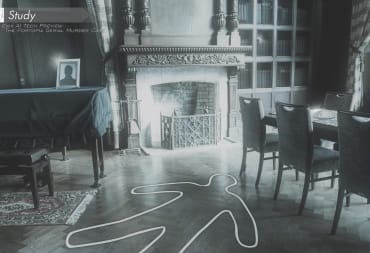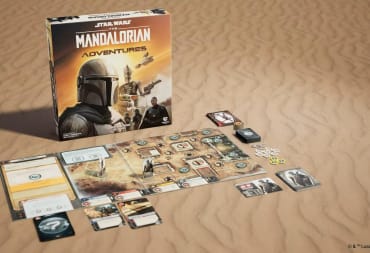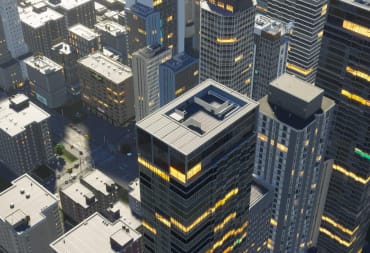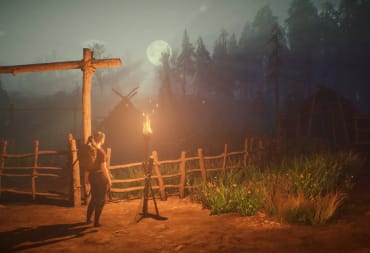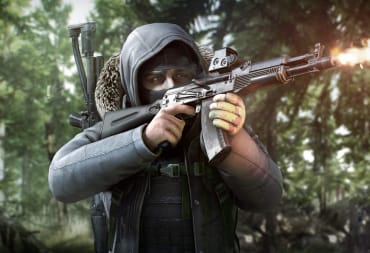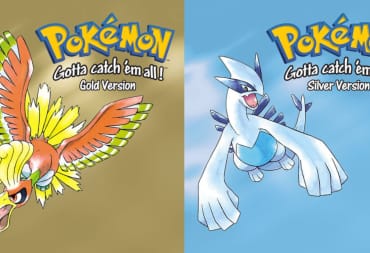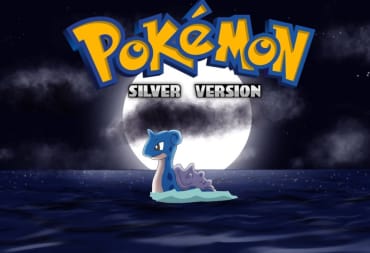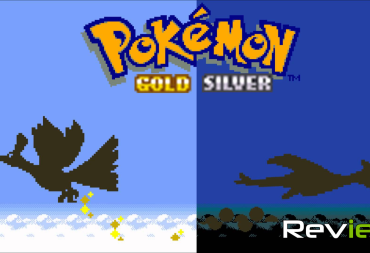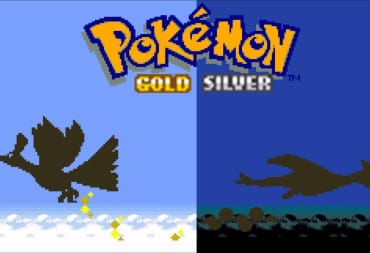The second generation of Pokemon is often considered the pinnacle of the entire franchise. Two fully explorable regions, two new types in Steel and Dark, and plenty of new activities based on a day/night cycle that enthralled players in the year 2000. Pokémon Gold, Silver, and Crystal are fondly remembered for being excellent follow-ups on the Game Boy Color.
This article is one in a series we’re calling the Year of Pokemon, which celebrates the beloved pocket monsters and their many games.
With every new generation, we get a slew of new Pokémon to capture as well. Generation 2 allowed us to capture 100 new Pokémon, some of which were evolutions and baby forms of monsters found in Generation 1. Generation 2 arguably has some of the best designs for the series, as it was hard to narrow down the best of the bunch to six. Who made the cut? Let’s find out.
First, as always, some ground rules. No legendary Pokémon will be featured here. Second, only one Pokémon per evolutionary line will be mentioned. Finally, the list will combine design aesthetics, competitive viability, and overall impact as part of the criteria of their design.
So let’s get into it, the six best Pokémon designs of Generation 2, in alphabetical order.
Ampharos
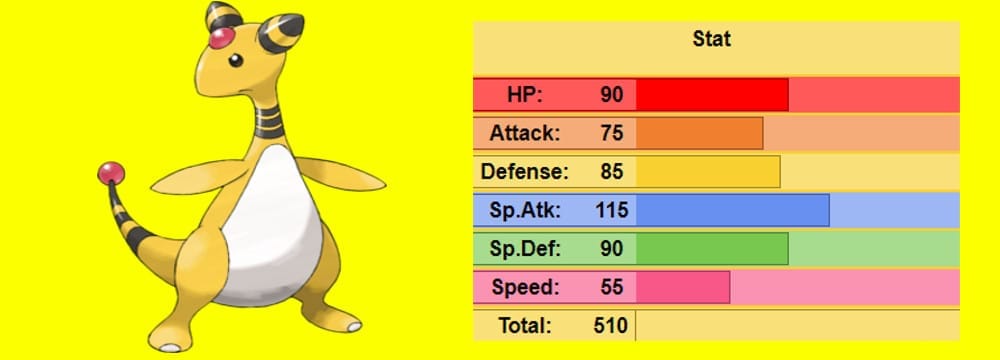
Ampharos is probably a dark horse choice, but its design is incredibly clever if you give it a lot of thought. Ampharos resembles a sheep that has been fully sheared, which throughout its evolutionary line (with Mareep and Flaaffy) grew increasingly taller and less woolly. The changes are not subtle, but it provides a stark difference between the three stages of the Pokémon, and one that thematically makes sense considering its based on sheep.
Thankfully it’s more than just being a naked sheep that helps Ampharos. Part of its design comes from its official description as the “light Pokémon.” First, being a pure Electric-type and possibly being a reference to a Philip K. Dick novel Do Androids Dream of Electric Sheep? (The novel that the movie Blade Runner is based on) while it’s long-necked body and large tail are said to represent a lighthouse in design. This is given further credence due to the Pokémon games themselves, where an Ampharos named Amphy lights the lighthouse for Olivine City.
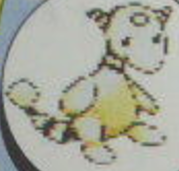
Ampharos is also one of the few Pokémon where we have a beta design for it revealed. Several Pokémon have gone through design changes—both good and bad—but Ampharos relatively stayed the same, save for a shorter neck and no red orbs on its forehead. A fun fact on that as well, the beta version of Ampharos was also meant to be an Electric/Dragon-type but was changed to a pure Electric-type during development. Years later, Ampharos would gain the Dragon-type through Mega Evolution, complete with a sleek new look based on a thick-maned Chinese Dragon.
Clearly, Ampharos has a lot of elements to its design that make it stand out. Thankfully it was also a fairly competent battler for years. It's slow for an Electric-type with a base 55 speed, but it makes up for that with impressive bulk; 90 for a HP stat was impressive in Gold and Silver, and 85/90 in its other defenses gives it some bulk to withstand hard Ground attacks. Ampharos also has an impressive 115 special attack and can learn a slew of moves to abuse the player with, including Thunderbolt, Discharge, Dragon Pulse, and Signal Beam. All in all, a very powerful Pokémon that can pack a punch against unsuspecting opponents.
Heracross
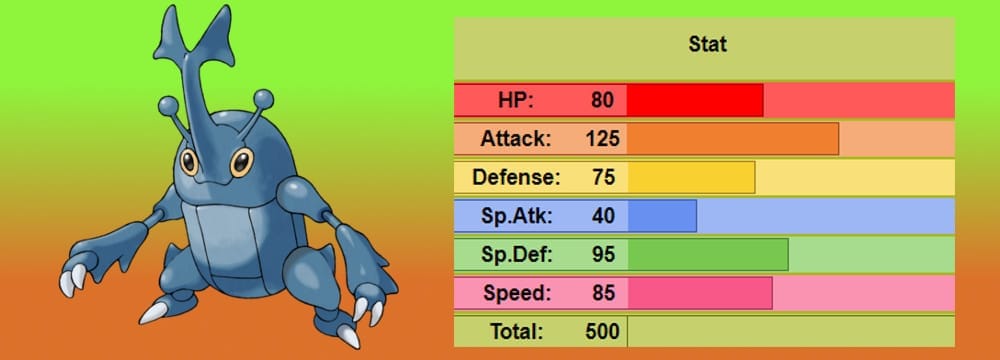
Arguably the most popular Bug-type in the entire franchise, Heracross is a powerhouse of a Pokémon that is blessed with a great design, great stats, and great typing. Bug/Fighting is actually fairly powerful—a double weakness to Flying-types notwithstanding—and Heracross has the perfect distribution of stats to make it work. A pure offensive powerhouse with a whopping base 125-attack stat, Heracross’s other stats, while hovering around the average mark, give it enough strength to carve through teams with a variety of power moves, such as Megahorn, Close Combat, Earthquake, and for those using it’s Mega Evolution, moves such as Pin Missile and Rock Blast.
Its physical prowess is only one aspect of it. The other is the overall design being simple but memorable while complementing that strength. A blue bodied bug with a massive, curved horn is incredibly eye-catching in the same way its often compared counterparts Pinsir in Generation 1. What makes it stand out above Pinsir is more than just the addition of the Fighting-type, but rather how the design purposely references its high attack stat. While it is often compared to a Hercules Beetle, (even in its name, Heracles is the Greek pronunciation of Hercules for example) the design of the horn is similar to the Japanese Rhinoceros Beetle, which in Japan were used for insect fighting due to their large size and strength.
It may be odd to talk about real-life insect fighting when referencing a game where giant bugs literally fight, but the historical context is interesting because it was a fairly common practice in many East Asian cultures for centuries. Many forms of insects were pitted against each other as a spectator sport at the very least. Early forms were usually cricket fighting found during the Tang Dynasty of China (roughly 600-900 C.E) before it exploded into a pastime for most commoners. Today, it is still a casual sport, most notably the Japanese Bug Fighting Video series.
The rather unique history of this cultural context of fighting bugs comes back to Pokémon as the typing of Heracross reflects that ancient pastime. Then again, the Pokémon series itself is just a fantasy version of real life insect fighting, but it is fascinating to see a glimpse into the historical reality through a simple, but effective design.
Houndour
I debated as to whether we should put Houndoom on this list instead, as its more demonic look is certainly a bold choice for a Pokémon, but something about the menacing design of Houndour just grabs attention for itself. Clearly based on a Rottweiler dog with some Dobermann features thrown in, Houndour and its evolution are references to the supernatural legends of Hellhounds, canines who guard the world of the dead.
It is important to note that the Dark-type in Japan is named the Evil-type, which is purposeful because almost every Dark-type introduced since Generation 2 was supposed to reflect a more sinister monster from folklore. Many of the Dark-types in the game are based on malevolent spirits, from evil Yokai to dangerous ghosts and gremlins. This in turn reflects in the design of Dark-types, often a mix of black colors with strong contrasts and accents to them that reflect more malevolent natures of the Pokémon.
This is what makes Houndour shine. The skullcap adorning its forehead, the almost steel-like shackles across its legs, and the ridges cascading along its back like a protruding spine; it is the most transparent evolutionary line that can be seen as truly “evil” in the entire Pokémon franchise. It makes Houndour and its evolution stand out among the cast of Generation 2; a striking design that is attractive due to its evil-looking aesthetics.
The typing also complements this, being one of only three Pokémon with a Dark/Fire combination. Its high special attack at an impressive 80 gives it great power in Little Cup formats, although its low 30-base defense means it needs to hit hard and fast to withstand a physical blow from an opponent. The biggest flaw for Houndour and its evolution is the lack of good coverage moves outside of Dark, Fire, and Normal moves. Often, Houndour needs to rely on the Hidden Power move for extra coverage, which depending on your Pokémon’s hidden stats, it will change its typing to one of the other types in the game, bar Fairy and Normal. Other odd moves include Sludge Bomb, Shadow Ball, and Solar Beam, but each of them is situational at best. Still, while Houndour is not the best Pokémon to pick in a Little Cup battle, it is more than a capable partner in the right hands that can surprise players willing to invest in its strengths.
Steelix
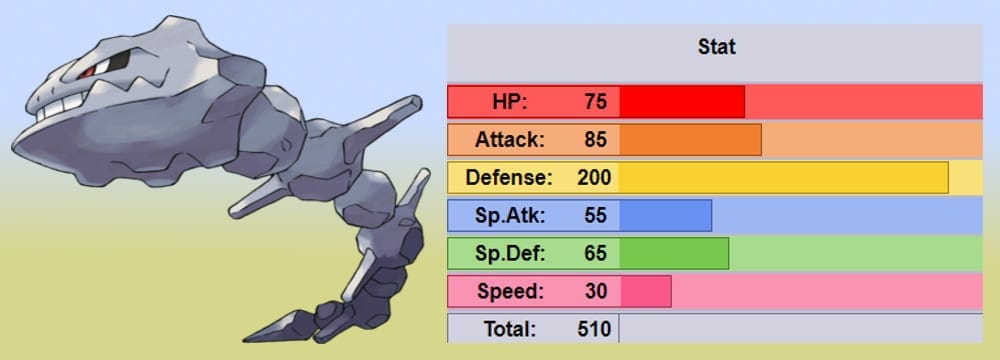
Onix in Generation 1 was a Pokémon that had a “love or hate” design to it. A massive rock snake on the surface is admittedly cool, but the design sort of falls into the negative category for many primarily because of the impractical use of Onix in the games as a whole. Onix is a deceptively strong Pokemon, sporting crippling weaknesses and low stats in everything save its Defense and Speed, making it at best a mediocre battler when compared to its counterparts of Golem and Rhydon.
The introduction of Steel-types, however, changed that. The rare in-game item, Metal Coat, was devised as a way to make two Pokémon, Onix and Scyther, evolve into two steel-types in Steelix and Scizor. Scyther has already been featured, but now it’s time to give Steelix its moment in the sun. Arguably the best designed steel-type in Generation 2, Steelix was infamous as being one of the premiere defensive walls in the entire game, thanks to a gargantuan 200-based Defense stat.
To put this in perspective, only two Pokémon, Shuckle and the recently released Stakataka, have higher base defense than Steelix without the help of a Mega Evolution. With Mega Evolutions factored in, Steelix is tied for the highest base Defense in the entire game with fellow Mega Evolved Steel-type Aagron and Shuckle at 230. To say it’s a defensive wall is a massive understatement.
Unlike Shuckle, however, Steelix has a lot more going for it in terms of design and battle capabilities. Design-wise, like Onix, it is based on a Wyrm, a sometimes limbless European Dragon known for burrowing underground. Steelix also incorporates some elements of geology into its design, specifically the use of high temperatures and pressure underground hardens rocks into strong gemstones. Even its Pokedex states its body is harder than a Diamond, a reference to the process and fitting as it changes it’s Rock-type to Steel upon evolving.
Steelix as a design is striking and impressive, and as a battler it takes a very specific strategy to utilize, being one of the premier stall walls in the entire franchise. The art of stalling and using defensive Pokémon on your team is actually fairly difficult, which is why in more casual fan formats, such as Smogon, hyper offensive styles of battling—use of Speed and high Attack stats—often rules the day because of the easier strategies players can incorporate. Steelix has low Special Defense at 65, and even if trained in it, cannot take many hits from threatening Water, Fighting, Ground or Fire-type moves. Skilled players can find ways to utilize its strengths to combat these weaknesses, particularly movesets that play around with Steelix’s poor speed with moves such as Trick Room, Curse, and Autotomize, while speed and size-based moves such as Heavy Slam or Gyro Ball deal adequate damage to opponents. This difficulty in using Steelix in battle has made it fall from grace upon its debut in Generation 2, but it is a powerful ally if used in the right circumstances.
Tyranitar
Tyranitar is the second of a long line of Pokémon known as “pseudo-legendaries.” For those unfamiliar with the fan term, pseudo-legendaries are all Pokémon with 600 base stats, three stages of evolution, and for all intents and purposes, some of the rarest Pokémon to be found in the games. The Dragonite line was the first pseudo-legendary, while generation 2 introduced Tyranitar to the world. The world has never been the same since.
Tyranitar is a striking Pokémon upon first glance. First, the obvious; a large, green-colored monster that was designed to be a homage to famous Kaiju Godzilla. The green-coloring is actually bony plates that protect its softer side; the exposed center of its purplish-blue belly being the primary example along its stomach. Tyranitar also incorporates real-world lizard traits into its design. The most common stems from the Armadillo Lizard, a golden brown colored lizard with a soft, yellowish-black underbelly that lives in deserts near rock formations.
Tyranitar is unique among pseudo-legendaries by being the first of only two to not be part Dragon-type. A dual Rock/Dark-type, Tyranitar is impressively bulky as a Pokémon, sporting a high 100/110/100 in all its defensive stats with an equally impressive 134 physical attack. Only its speed is a major weakness at 61. Tyranitar is further boosted thanks to its Sand Stream ability, which not only conjures up an automatic sandstorm but boosts its special defense a further 50% when it’s active.
To say the least, the monster is a proficient battler and used as a primary defensive powerhouse on a given team. It is thankfully a powerful Pokémon when it comes to physical attacks as well, and due to Sand Stream and its already high defensive capabilities, it often runs wholly physical moves such as Crunch, Earthquake, Rock Slide and Outrage. Tyranitar doesn’t live the pseudo-legendary name down no matter how you use it though; it is a powerful and visually intimidating Pokémon.
Umbreon
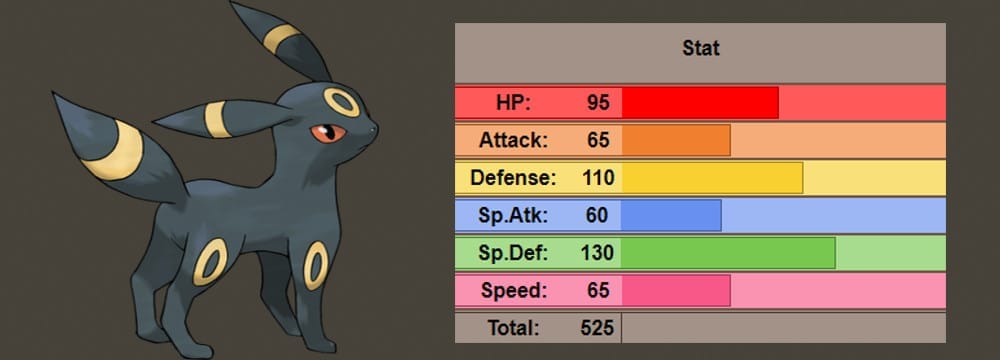
Eevee is perhaps one of the most popular Pokémon in the game not because of its cute factor (which let’s face it, helps it immensely) but because of its unique ability to evolve into, as of this writing, eight different evolutions. Each of the evolutions (known as Eeveeloutions by the fanbase) is iconic, blessed with clever designs that represent some of the best visual treatment in the Pokémon franchise.
But if I had to pick one out of the eight designs to stand out, my money would be on Umbreon. Dark-type Pokémon in Generation 2 were always among the best-designed Pokémon of the game. While there are only six of them found in Johto and Kanto (three of which are on this list), each of them brought something to the table when it came to both battling and visual aesthetics, providing a “dark-side” to the Pokémon world that was sorely lacking in the first Generation. Umbreon, for my money, is the least sinister of the Dark-types in the game, perhaps due to its connection to the moon.
Umbreon has a few references in its design. The sleek black body with glowing golden rings has been associated with Egyptian animal sculptures, most notably the cat of Bastet and Jackal Anubis. The placing and shape of the golden accents are also references to the god of the moon Khonsu. One other primary reference is based on the Japanese legend of the Moon Rabbit. In the story, a rabbit willingly sacrifices itself to feed a God disguised as a hungry old man, who was so moved by its willingness to die, it immortalizes the rabbit by drawing its face on the moon.
Thematically, Umbreon can also represent that sacrifice based on how it plays in battle. Generation 2 was known for defensive Pokémon (as you can see above) and while not a massive physical wall like Steelix, Umbreon’s bulk was its selling point by possessing impressive 95/100/130 defensive stats. Primarily a special defensive tank, Umbreon shines in double battle situations where it can not only soak up damage but support teams with its clerical abilities such as Wish, Syncrhonize, Guard Swap, Helping Hand, and Psych Up to support its allies.
In single formats, the built-in bulkiness of Umbreon gives it a diverse set of options that shine in stalling opponents. While it has only 60/65 in its attack stats, Umbreon also has access to a ton of stat manipulation moves such as Screech and Fake Tears and the Dark-type move Foul Play, which bases its power on the opponents attack over its own if it would rather do damage. It also has access to Snarl, a move that is not powerful but lowers special attack on opponents. Umbreon has a diverse movepool that it can play around with, making it fairly unpredictable despite performing the same roles in battle.
And there you have it. Generation 2 had a ton of solid designs, but for my money, the top six above are the ones that stand out the most. Of course, not every Pokemon from Generation 2 had winning designs, so next time we will check out the six-worst coming out of Johto.
Do you agree with these choices? Do you have a Pokémon I may have overlooked for this list? Leave your comments below.
All stat blocks are courtesy of Bulbapedia.
Have a tip, or want to point out something we missed? Leave a Comment or e-mail us at tips@techraptor.net
